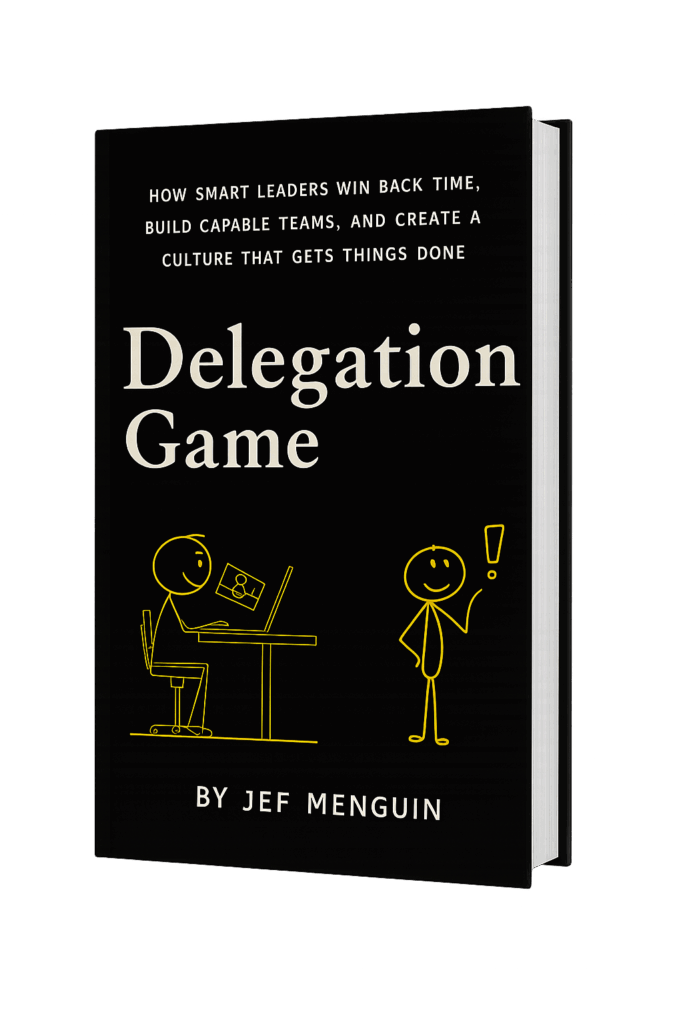Leaders don’t just set policies. They write culture.
And here’s the catch: most of the rules they write are never spoken, never documented, and never announced in a handbook. They’re modeled in silence. They’re absorbed in glances, decisions, and habits.
“Don’t question authority.”
“Don’t show weakness.”
“Work comes before people.”
Nobody writes these rules down. But teams learn them fast—because people don’t follow what leaders say, they follow what leaders do.
That’s why leadership is never neutral. Every choice, every reaction, every silence writes a rule. The only question is: are you writing rules that build trust, or ones that break it?
A Story About Silence
I once worked with a supervisor who was respected for his technical skills but feared for his silence.
In meetings, he rarely asked for input. When someone disagreed with him, he frowned and moved on. When mistakes happened, he stayed quiet, then fixed the problem himself after the meeting.
What rule did his team learn? “Don’t speak up. Don’t make mistakes. Don’t bother contributing if it’s not safe.”
He never said those words. But his silence was louder than any policy. Within a year, his team stopped offering ideas. They just waited for orders. A culture of fear had been written—not in a manual, but in the unwritten rules of leadership.
The Five Unwritten Rules Leaders Model by Accident
Let’s talk about the hidden rules most leaders pass down without meaning to. Chances are, you’ll recognize at least one.
1. My Way Is the Only Way
Unwritten Rule: “If you want to succeed, do things exactly like the boss.”
A new employee comes in with fresh ideas. They suggest a faster process. Instead of exploring it, the leader replies, “That’s not how we do it here.” End of discussion.
What’s the rule? Don’t experiment. Don’t innovate. Just copy the boss.
The problem is obvious: teams lose creativity. People stop trying new approaches. The organization becomes a museum of old habits, not a laboratory for progress.
The Flip: Leaders who say, “Show me a better way,” create teams that improve constantly. When people know their ideas are welcome, they bring their best thinking forward.
2. I’m Above Feedback
Unwritten Rule: “Feedback only flows one way—down.”
In many companies, leaders hand out feedback like grades. But when it comes to their own performance? Off-limits.
The message to the team is clear: “I don’t need feedback. I’m the boss.”
The cost is high. Blind spots grow. Leaders miss signals. Employees lose respect. And slowly, trust erodes.
The Flip: Leaders who ask, “What’s one thing I can do better?” model humility. They prove feedback is not punishment—it’s fuel. The moment leaders invite critique, they teach the team that learning never stops.
3. Vulnerability Is Weakness
Unwritten Rule: “Leaders must always look strong.”
I worked with a manager who believed showing uncertainty would make her team doubt her. So she always pretended to have the answer—even when she didn’t.
Her team learned quickly: never admit weakness. Never ask for help. Never say, “I don’t know.”
That rule crushed collaboration. People hid struggles until they became disasters. No one reached out. Everyone wore masks.
The Flip: Leaders who admit mistakes, share doubts, and ask for input teach the opposite rule: vulnerability builds trust. When leaders show they’re human, people feel safer to be human too.
4. Results Matter More Than People
Unwritten Rule: “As long as the numbers look good, nothing else matters.”
Some leaders only celebrate outcomes: sales closed, targets hit, reports finished. But they ignore the human side—burnout, exhaustion, disengagement.
The unspoken rule? People are tools. Deliver results at all costs.
The damage shows up as turnover. Talented employees leave because they feel like machines. The ones who stay give only the minimum.
The Flip: Leaders who balance results with care show that people matter. When someone says, “Great work on the project—and how are you holding up?” it sends a new message: “You’re not just a number. You’re a person.”
5. Conflict Is Dangerous
Unwritten Rule: “Don’t rock the boat.”
Many leaders think avoiding conflict keeps the peace. So they shut down disagreements quickly. Teams learn to stay polite, stay quiet, and never challenge.
But peace without honesty is just silence. The problems don’t go away—they fester.
The Flip: Leaders who say, “Let’s put the tough issue on the table,” create teams that solve problems faster. Healthy conflict builds clarity and trust. When leaders invite respectful debate, they flip the rule from fear to growth.
The Mirror Test for Leaders
Here’s a challenge for every leader:
👉 “What rule do I model without saying a word?”
Your team already knows the answer. They watch how you handle mistakes, how you respond to disagreement, how you treat people under pressure. From those moments, they write the real rulebook of your leadership.
The Mirror Test is simple:
- Ask your team what rules they think you live by.
- Reflect on whether those are the rules you want to live by.
- Choose one rule to flip—and show the flip in action.
Because the culture you want won’t come from your posters. It will come from the rules your people see you model every day.
Table: Leadership Rules and Their Flips
| Unwritten Rule Leaders Model | Flip That Builds Trust |
|---|---|
| My way is the only way | Invite better ways |
| I’m above feedback | Feedback fuels leadership |
| Vulnerability is weakness | Vulnerability builds trust |
| Results > People | People + results = sustainable success |
| Conflict is dangerous | Conflict creates clarity |
FAQs About Leadership and Unwritten Rules
Do leaders really create rules just by their behavior?
Yes. Teams watch leaders closely. Silence, reactions, and habits all send signals. Over time, those signals harden into unwritten rules.
What if a leader doesn’t realize the rules they’re teaching?
That’s the danger. Most unwritten rules are unintentional. The first step is awareness—asking the Mirror Test.
How can a leader flip a bad rule?
Start with one small, visible behavior. If the old rule was “I’m above feedback,” then ask for feedback in the next meeting. The flip must be seen, not just said.
Isn’t this just another word for culture?
Unwritten rules are the building blocks of culture. They’re the day-to-day shortcuts that create the larger patterns. If you change the rules, you change the culture.
Breaking the Rules, Building the Shift
Leadership isn’t about writing more policies. It’s about rewriting the invisible rules people already follow.
So here’s your challenge: Which unwritten rule are you teaching without realizing it? And what flip do you want your team to see this week?
👉 Download the Rule-Breakers Kit to surface and flip the rules shaping your workplace.
👉 Or join our Team Bayanihan workshops to help your leaders model the rules that build trust, not fear.
Because the most powerful rules in leadership are never written—but they can always be rewritten.


